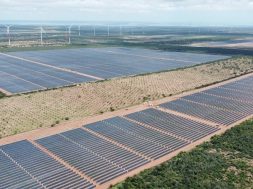
TOKYO : Kyocera Corp will start volume production of a new lithium-ion (Li-ion) battery that does not cause any accident in principle and is expected to drastically increase capacity density in 2020.
The new Li-ion battery can reduce material cost by about 40% and shorten manufacturing process to 1/3, compared with existing Li-ion batteries, according to Kyocera. Also, it has less technical problems than all-solid batteries, which can realize both a high safety and high density and are attracting attention. Therefore, the new battery can start to be mass-produced early.
For the new battery, Kyocera employed a totally new composition of slurry, which constitutes an electrode with a collector (metal foil in general). The existing slurry includes (1) active materials (that absorb and discharge Li ions and contribute to storing power), (2) binder (adhesive) that makes it easier to attach the slurry closely to the metal foil, (3) solvent that makes the application of the slurry easier, etc.
On the other hand, the new battery eliminates the needs for a binder and solvent. The existing manufacturing process requires a drying process after applying the slurry liquefied by using binder or solvent to the metal foil, and the volume of the slurry is reduced, making it impossible to thickly apply the slurry. The new Li-ion battery can eliminate the drying process because it does not use binder and enables to apply the slurry thickly.
According to 24M Technologies Inc, whose technology is the base of the new battery, the thickness of the slurry can be 300-500μm, which is about five times larger than that of existing batteries (60-110μm).
If the new battery incorporates the same amount of active materials as existing batteries, it becomes possible to reduce the amount of metal foil, enabling to reduce material cost and improve energy density. The energy density of this part is three to four times higher, compared with existing products.
24M’s slurry contains electrolyte and is viscous. Focusing on the viscous slurry, the company calls the new battery a “clay type” battery.
Safety, reliability enhanced by improving design
The new battery features (1) a design improvement for enhancing safety and reliability and (2) a technical characteristic that can improve capacity density to a level that existing batteries cannot realize. In addition, it enables to recycle rare materials at a low cost without decomposing them.
First, to ensure a high safety and high reliability, Kyocera prevented the variations of production process from causing defects. In the case of existing Li-ion batteries, electrolyte and a separator are sandwiched between electrodes, constituting a battery cell.
Sometimes, metal powder produced at the time of severing and welding for constituting a cell enters a cell, or a short-circuit is caused between the positive and negative electrodes due to the displacement of electrode, causing a fire accident.
The new battery does not require a process of cutting metal because it uses processed metal foil. The welding of the cell’s external terminal is conducted after sealing each cell by using a plastic film and pouch processing. Therefore, metal pieces produced at the time of welding do not enter the cells. Also, many cells are combined to make a module after sealing the cells. So, metal pieces produced at the time of processing the metal case of the module do not enter the cells, either.
If a short-circuit should be caused in a cell, it would be insulated by the pouch material and would not affect other cells. The electrodes are fixed together with the separator by pouch processing and are hardly dislocated, according to Kyocera.
More material options might realize capacity density of 500Wh/kg
The new battery has a potential of improving capacity density because it enables to select electrolyte and active material from a larger number of options than existing batteries.
As for electrolyte, by placing solid electrolyte between the positive and negative electrodes, it becomes possible to select an appropriate electrolyte for each of the positive electrode’s and negative electrode’s active materials.
In the case of existing Li-ion batteries, electrolyte is injected so that it fills the space between the positive and negative electrodes. Because the same electrolyte is used for both of the electrodes, it is not possible to use, for example, a material that is excellent for the positive electrode but causes a side effect at the negative electrode.
On the other hand, for the new battery, for example, an ether-based material suited only for the negative electrode and a fluorine-based material suited only for the positive electrode can be used.
The new battery does not use binder for electrolyte. So, it is possible to use an active material that realizes a high energy density at a high potential, which triggers reaction with binder.
Moreover, 24M Technologies will apply (1) a method of using high-purity silicon (Si) for the negative electrode in the aim of increasing capacity in the future and (2) a method to impregnate the battery with an excessive amount of Li to cope with the phenomenon in which the number of Li ions, which contribute to storing power, decreases due to long-term use.
Material recycling without loss
The materials of the new battery can be easily recycled. Because its slurry does not include binder, the slurry can be easily separated from the metal foil and recycled as a raw material used in the manufacturing process almost as it is.
In the case of existing Li-ion batteries, it is difficult to separate dried slurry from the metal foil, and it is necessary to separate it into Li, etc.
In many cases, the number of Li-ions in active materials decreases after use. So, 24M Technologies is developing a method to add Li ions at the time of recycling.













